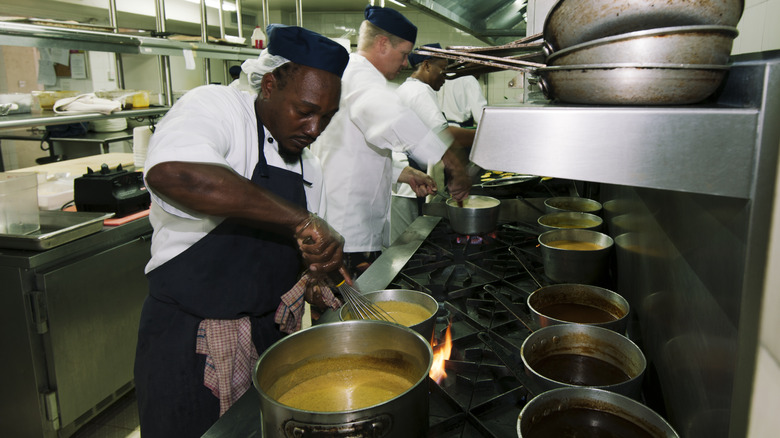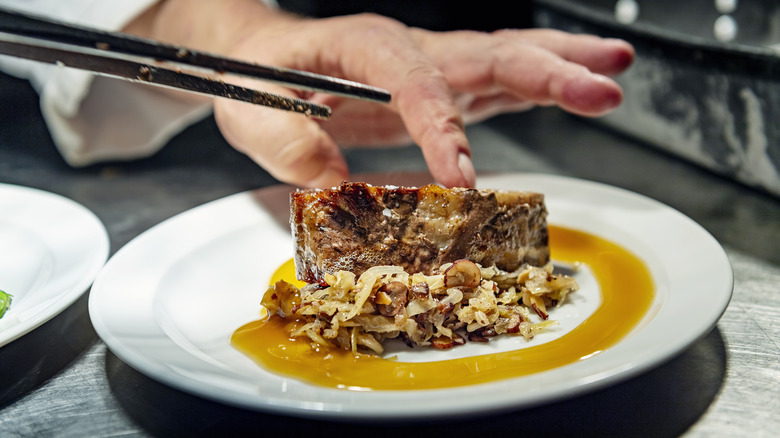Why Some Chefs Scrap The Whole Dish When One Ingredient Is Missing
After eyeing endless Instagram posts and online menus leading up to a dinner reservation, it can be disappointing to find the menu item you had your eye on is not available. Some chefs make the decision to 86 an item — chef speak for when they run out of something — even if just a single ingredient is missing.
As frustrating as it can be in the moment, it really is for the best. Chefs put a lot of effort into developing each dish with consideration for qualities such as flavor, texture, aesthetics, cook time, and cost. Missing one ingredient can throw off the balance of the whole dish, and many chefs do not want to sacrifice the integrity of something they created thoughtfully. Even if you may insist that the dish would be fine without it, the chef likely does not want to send out something that is not up to their standards.
How chefs handle this situation
There are many reasons restaurants may not have enough of the ingredients they need. Sometimes it is avoidable, and sometimes it is not. Perhaps a new employee in charge of ordering made a mistake, or a prep cook accidentally scorched a sauce an hour before service. Maybe several large parties came in without a reservation, or clientele over a particular period ordered one dish with unexpected frequency.
If the missing item is something like a key protein or vegetable, the dish just won't be available until the next ingredient delivery arrives. In some cases, a chef may even send an employee on an emergency grocery run if they don't want to wait for their scheduled order.
In other situations, the chef may decide to make more of the missing ingredient during service. This can be a real challenge for line cooks who are already preparing dishes to order, but they may have the capacity to whip up a new batch of béchamel sauce or blanch some broccoli rabe if they aren't too busy. In this situation, the front-of-house staff should be clearly communicated with so they can inform the guest about a possible longer wait time. A chef may also decide to temporarily remove an item from the menu while they catch up, and then make it available to order again a little later on.
Can't they just substitute for the missing ingredient?
Some chefs may decide that a reasonable substitute is available, such as replacing sirloin with another delicious cut of steak, like a New York strip, or substituting roasted winter squash for grilled sweet potatoes. However, they can only make this swap when they have an ample surplus. Otherwise, they risk running out of what they need for the menu item those ingredients were originally intended for.
It is absolutely imperative that all ingredient changes are relayed to guests due to potential allergies or sensitivities. Switching from sourdough bread to whole wheat may not seem significant, but if the wheat bread also contains an allergen like sunflower seeds, it could be hazardous if not communicated explicitly. Aside from potential medical issues, being clear with guests about any changes is important in case they have an aversion. At the end of the day, service industry professionals want diners to enjoy their entire meal, so sometimes that means guests may just have to order a different dish.



